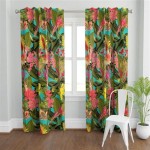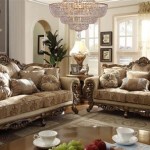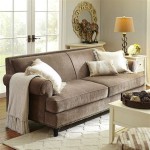Choosing the Right Curtains for Your Two-Story Living Room
Two-story living rooms, characterized by their soaring ceilings and expansive windows, offer a dramatic architectural statement. However, this grandeur presents unique challenges when it comes to window treatments. Selecting the appropriate curtains for such a space requires careful consideration of factors like light control, privacy, energy efficiency, aesthetics, and practicality. Curtains, more than mere fabric coverings, become integral design elements that influence the overall ambiance and functionality of the room. The sheer scale demands a thoughtful approach to ensure the curtains complement the architecture, address functional needs, and contribute to a cohesive and inviting atmosphere.
The selection process extends beyond simply choosing a preferred color or pattern. It involves understanding how the curtains will interact with the natural light, affect the room's temperature, and integrate with the existing furniture and decor. Given the height of the windows, factors like fabric weight, lining options, and operating mechanisms become particularly important. Furthermore, accessibility for cleaning and maintenance should be a primary consideration, as reaching curtains at such heights can require specialized equipment. Properly chosen curtains can transform a two-story living room from a potentially cold and echoing space into a warm, inviting, and visually stunning centerpiece of the home.
Key Considerations for Fabric and Lining
The choice of fabric is a cornerstone of successful two-story living room curtain design. The ideal fabric should not only complement the room's aesthetic but also provide the desired level of light control and privacy. Heavier fabrics, such as velvet, brocade, or thick linen, offer excellent light blocking capabilities, ideal for rooms that receive excessive sun exposure or where complete privacy is desired. These fabrics also contribute to improved insulation, helping to regulate temperature and reduce energy costs. However, their weight can make them more challenging to handle and may require a more robust curtain rod and operating system.
Lighter fabrics, like sheer linen, voile, or cotton blends, allow more natural light to filter through, creating a bright and airy atmosphere. These fabrics are well-suited for rooms where privacy is less of a concern or where the goal is to enhance the natural light. While lighter fabrics are easier to manage and maintain, they offer less insulation and privacy. The selection of fabric weight should be carefully considered in relation to the room's orientation, the amount of direct sunlight it receives, and the level of privacy desired by the homeowner.
The addition of a lining can significantly enhance the performance and longevity of curtains. Linings serve several purposes, including providing additional insulation, increasing privacy, protecting the face fabric from sun damage, and adding body and fullness to the curtains. Blackout linings are specifically designed to block out all light, making them ideal for media rooms or bedrooms where complete darkness is desired. Dimout linings offer a moderate level of light control, reducing glare and creating a more subdued atmosphere. Interlinings, a layer of fabric placed between the face fabric and the lining, provide extra insulation and sound dampening, further enhancing the comfort and functionality of the room. The choice of lining should be based on the specific needs and priorities of the homeowner.
Consider the texture and weave of the fabric as well. A highly textured fabric can add visual interest and depth to the room, while a smooth fabric can create a more subtle and understated look. The weave of the fabric can also affect its light-filtering properties. A tightly woven fabric will block more light than a loosely woven fabric. Sampling fabrics in the room and observing how they look under different lighting conditions is crucial before making a final decision. This allows the homeowner to assess the fabric's texture, color, and light diffusion qualities in the context of the existing decor.
Addressing Functionality and Operation
The height of two-story living room windows presents unique challenges when it comes to operating and maintaining the curtains. Manually drawing heavy curtains at such heights can be physically demanding, and reaching the upper sections for cleaning or repairs can be difficult without specialized equipment. Therefore, selecting an appropriate operating system is essential for ensuring ease of use and long-term functionality. Motorized curtain tracks offer a convenient and effortless way to open and close curtains at the touch of a button. These systems can be controlled via remote control, wall switch, or even integrated into a smart home system for automated operation. Motorized systems are particularly beneficial for heavy or hard-to-reach curtains.
Cord-operated systems provide a more traditional approach to curtain operation. These systems utilize a cord or chain to draw the curtains open and closed. While less expensive than motorized systems, cord-operated systems require more manual effort and can be challenging to operate for individuals with limited mobility. The length of the cord should be carefully considered to ensure it is easily accessible without posing a safety hazard. Wand-operated systems offer a simplified alternative to cord-operated systems. A wand is attached to the curtain and used to manually slide the fabric along the track. These systems are easier to operate than corded systems and eliminate the risk of tangled cords.
Choosing the right hardware is just as important as selecting the operating system. The curtain rod or track should be strong enough to support the weight of the curtains and designed to accommodate the chosen operating system. For heavy fabrics, a heavy-duty rod made of steel or wrought iron is recommended. The rod should also be long enough to extend beyond the window frame to allow the curtains to fully open without blocking any light. The brackets used to support the rod should be securely mounted to the wall or ceiling, ensuring they can withstand the weight of the curtains and the forces exerted during operation. Consider the aesthetic of the hardware as well, selecting a style that complements the curtains and the overall decor of the room. Finials, brackets, and other decorative elements can add a touch of elegance and personalization to the window treatment.
Access for cleaning and maintenance is often overlooked but is a crucial consideration for two-story living room curtains. Given the height, regular dusting and occasional washing or dry cleaning are essential for maintaining the appearance and longevity of the curtains. This may require the use of a ladder or scaffolding, or even professional cleaning services. Choosing fabrics that are easy to clean and maintain can simplify this process. Regular vacuuming with a brush attachment can help remove dust and debris, while spot cleaning can address minor stains. For more thorough cleaning, it is recommended to follow the manufacturer's instructions for the specific fabric and lining.
Aesthetic Considerations and Design Integration
Curtains in a two-story living room have a significant impact on the room's overall aesthetic. They frame the windows, add texture and color, and contribute to the room's sense of style and personality. When selecting curtains, it is essential to consider how they will integrate with the existing furniture, decor, and architectural features of the room. The color, pattern, and style of the curtains should complement the room's color palette and design theme. For example, a formal living room may benefit from elegant drapes in a rich fabric, while a more casual living room may be better suited to lighter curtains in a simpler style.
The length of the curtains is another important aesthetic consideration. Curtains can be hung to different lengths, each creating a different visual effect. Floor-length curtains, which graze the floor or slightly puddle, create a luxurious and elegant look. This style is well-suited for formal living rooms or master bedrooms. Sill-length curtains, which end at the windowsill, are a more practical choice for smaller rooms or where there are obstacles beneath the window. Apron-length curtains, which extend slightly below the windowsill, offer a compromise between the two, providing a more tailored and polished look. The choice of curtain length should be based on the room's size, style, and the presence of any obstacles.
Consider the use of patterns and textures to add visual interest to the room. A patterned curtain can be a focal point, drawing the eye and adding personality to the space. However, it is important to choose a pattern that complements the existing decor and does not overwhelm the room. A subtle pattern or texture can add depth and dimension without being too distracting. Vertical stripes can create the illusion of height, while horizontal stripes can make a room feel wider. The scale of the pattern should also be considered in relation to the size of the room. A large-scale pattern may be overwhelming in a small room, while a small-scale pattern may get lost in a large room.
The choice of curtain heading style also influences the overall aesthetic. Different heading styles create different folds and pleats, affecting the way the curtains hang and look. Pleated headings, such as pinch pleat, goblet pleat, or pencil pleat, create a more formal and tailored look. These headings are well-suited for formal living rooms or dining rooms. Rod pocket headings, which create a gathered look, are a more casual and relaxed option. Grommet headings, which feature metal rings that slide onto the rod, create a clean and contemporary look. Tab top headings, which feature fabric loops that attach to the rod, offer a simple and understated style. The choice of heading style should be based on the desired aesthetic and the overall style of the room.

2 Story Ideas In Austin Tx By The Great Curtain Company

Two Story Living Room Curtains Design Ideas

2 Story Ideas In Austin Tx By The Great Curtain Company

2 Story Ideas In Austin Tx By The Great Curtain Company

Two Story Living Room Curtains Design Ideas

Need Design Help Curtains For 2 Story Living Room

100 Blackout Extra Long Linen Curtains Custom Made 9 24 Feet Length Wide 2 Story Living Room Ikiriska Off White Gray Tall Ceiling Drapes Etsy

120 Two Story Drapery Ideas Designs Custom

Two Story Living Room Curtains Design Ideas

Lady Dianne S Window Treatments For Two Story Windows Custom Bed








